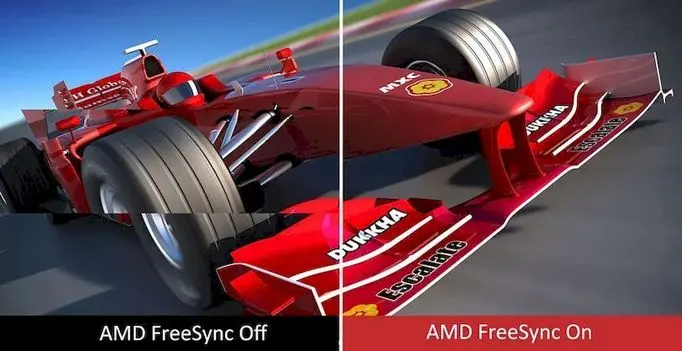What is the difference between Freesync and G-Sync

The best games can be ruined by screen tearing, which occurs when synchronization between the graphics card and the monitor fails.
Both Nvidia and AMD offer solutions based on adaptive refresh technology with differences in implementation, benefits, and costs.
Before the two major graphics card technology vendors offered their own solutions to syncing issues between GPUs and monitors, the only answer to the screen tearing problem was V-Sync, a high-end technology that had the side effect of performance and latency issues.
G-Sync and FreeSync are designed to smooth gameplay, reduce lag and prevent screen tearing. Both solutions implement different methods to achieve their goals, but what really sets them apart is that Nvidia maintains G-Sync as a proprietary technology, while AMD shares FreeSync with the industry in an open-source manner.
General differences between Freesync and G-Sync
While G-Sync requires the inclusion of a dedicated module inside the monitor, FreeSync uses the functionality of the graphics card to manage the refresh rate of the monitor using Adaptive Sync technology built into the standard DisplayPort specification.
Screen tearing and image stuttering are an effect of misalignment between the frames per second (FPS) produced by the video card and the refresh rate of the monitor.
If the monitor is halfway through its task of drawing an image and another image arrives shortly after, its task is split in half and it begins drawing the new image. This causes stuttering until the image is refreshed, or a horizontal tear that causes two halves of different frames to be displayed on the screen at the same time.
Those who noticed the issue may have enabled V-Sync to alleviate the issue and observed a decrease in performance as a result. This is because V-Sync adjusts the card’s frame output to the expected refresh rate of the monitor. This causes a limitation to be applied to the FPS value.

V-Sync works this way because monitors generally do not transmit information to the graphics card. Your refresh rate is always the same no matter how many frames are sent to you per second. Adaptive sync technology makes it possible for the monitor’s refresh rate to change to match the graphics card’s output. This prevents screen tearing without putting a cap on the card’s FPS.
Unfortunately, not all adaptive sync technologies are created equal, forcing you to choose a side: Nvidia or AMD.
One of the first questions that arises when talking about adaptive refresh technology is the difference between open standard and closed standard. While G-Sync is Nvidia’s proprietary technology and requires the company’s permission and cooperation to use it, FreeSync is a free technology.
G-Sync has been around for longer and is controlled by Nvidia. FreeSync is quickly gaining traction thanks to its wider aperture. The incompatibility between the two technologies forces you to decide on one side and choose a monitor and GPU that can interact when it comes to syncing your FPS and refresh rates.

Price difference
When considering the cost of two alternatives for managing FPS and refresh rate synchronization, two aspects must be considered: GPU and monitor. With Nvidia’s alternative, the module inside the monitor does the heavy lifting regarding adjusting the refresh rate. This is reflected in the price paid for the monitor, considering that its manufacturer must pay Nvidia for the G-Sync hardware.
Unlike G-Sync, FreeSync does not force monitor manufacturers to purchase special hardware to adapt to the technology, so FreeSync-compatible monitors tend to be priced significantly lower than G-Syncs with similar features.
Performance difference
There are performance differences between FreeSync and G-Sync in several ways. Regarding FreeSync, although a reduction in tearing and stuttering problems is noticed, another problem arises: ghosting. As objects move on the screen, they leave part of the image in its final position, like a trail. This is an effect that many people don’t notice, but may bother detail-oriented users.
The physical cause of ghosting is related to power management. If the pixels are not given enough power, the image may appear hollow, while if too much power is provided, ghosting may appear. Balancing adaptive balancing technology with proper power distribution is difficult.
Both G-Sync and FreeSync lose effectiveness when the FPS is not consistent with the monitor’s refresh rate range. G-Sync can present flickering issues at very low frame rates, and although the technology generally manages to compensate for these jitters, there are exceptions. FreeSync, on the other hand, causes stuttering if the FPS drops below the minimum refresh rate of the monitor.